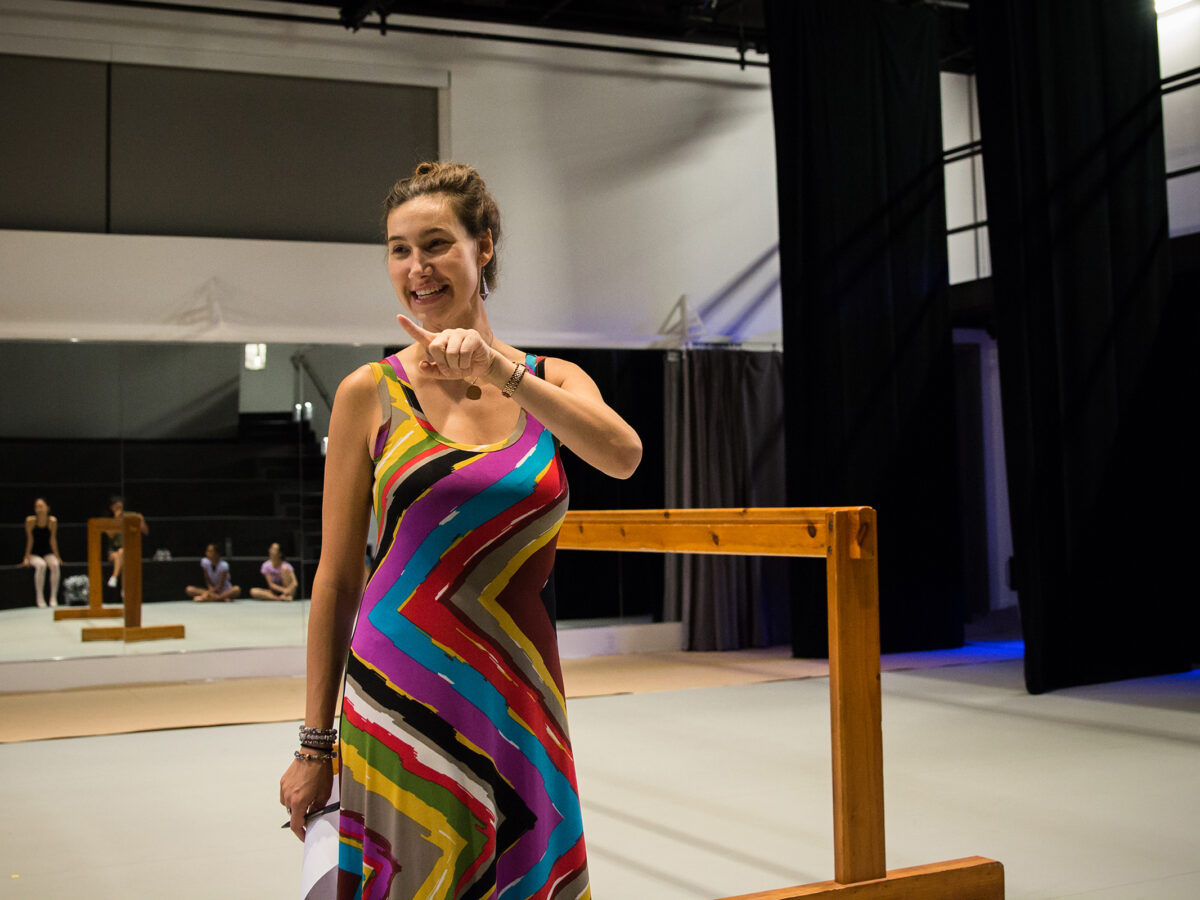Allison Duke

Like many 10-year-old girls, Allison Duke was entranced by the Sugar Plum Fairy in a local performance of “The Nutcracker.” A gymnast at the time, she hadn’t danced for several years. But, watching her sister present roses to the lead dancers after the performance, she yearned to dance again and returned to dance classes a month later. She’s been dancing ever since.
“It feels like the easiest way to express myself,” she says. “Public speaking makes me nervous, but I’ve never been nervous dancing on stage.”
Dancing is a gift Duke has eagerly shared with students since joining Exeter’s faculty ten years ago. A teacher with the Boston Ballet’s youth dance program as well as at schools in Portland, Maine, and Portsmouth, New Hampshire, Duke called Linda Luca, Exeter’s former director of dance, in 2008, asking if she needed a substitute teacher. “I was young, but Linda invited me to attend a master class and that led to a string of teaching opportunities at Exeter,” Duke remembers. “She enabled me to elevate the level of ballet techniques we offered students.” Duke became director of Exeter’s dance program in 2011.
Boldly diverse perspectives
Although schooled in traditional Western dance methods—ballet, modern and jazz—Duke is fascinated by other dance forms, especially West African dance. After watching a performance accompanied by Exeter’s West African Drumming Ensemble, she explored the dance form further, choreographing performances and examining it from a sociocultural perspective. That led to a yearlong graduate program at London’s University of Roehampton, where she received a master’s degree in dance anthropology.
Since completing her degree in 2017, Duke has diversified Exeter’s dance curriculum, adding a popular hip-hop class, as well as Dance in Society, a class combining theory and practice about the ways dance intersects with society through such forms as salsa, belly dance, Irish step, swing and more.
Dance for all levels and interests
Learning to dance, Duke believes, is similar to learning a new language: Master the fundamentals first, then explore. Her students include curious beginners and aspiring professionals who perform with the dance company and develop their own choreography (they’ve also appeared in community events like “One Billion Rising”).
In class, Duke encourages beginning as well as advanced dancers to explore themes, images or narratives through movement, then discuss their choices. “The students are very collaborative,” she says. “They may create the choreography and choose the music, coached by me or another teacher, but they’re creating original dances, then teaching their peers.”

Dance gains a new home
With the opening of The David E. and Stacey L. Goel Center for Theater and Dance, Duke has a dramatic new stage on which to expand the school’s dance curriculum. Inside the 63,130-square-foot venue is a performance studio designed specifically for dancers, with 119 seats, a sprung floor and full technical capacity for lighting and projection. A second dance studio for classes and rehearsals is highlighted by a large corner window offering a 180-degree view of campus.
“We have a close dance community here,” says Duke, who is looking forward to sharing her passion for dance with more students now that the new facility is open. “It’s a gift to help students have a deeper understanding of dance and create positive experiences around it. It’s very rewarding.”